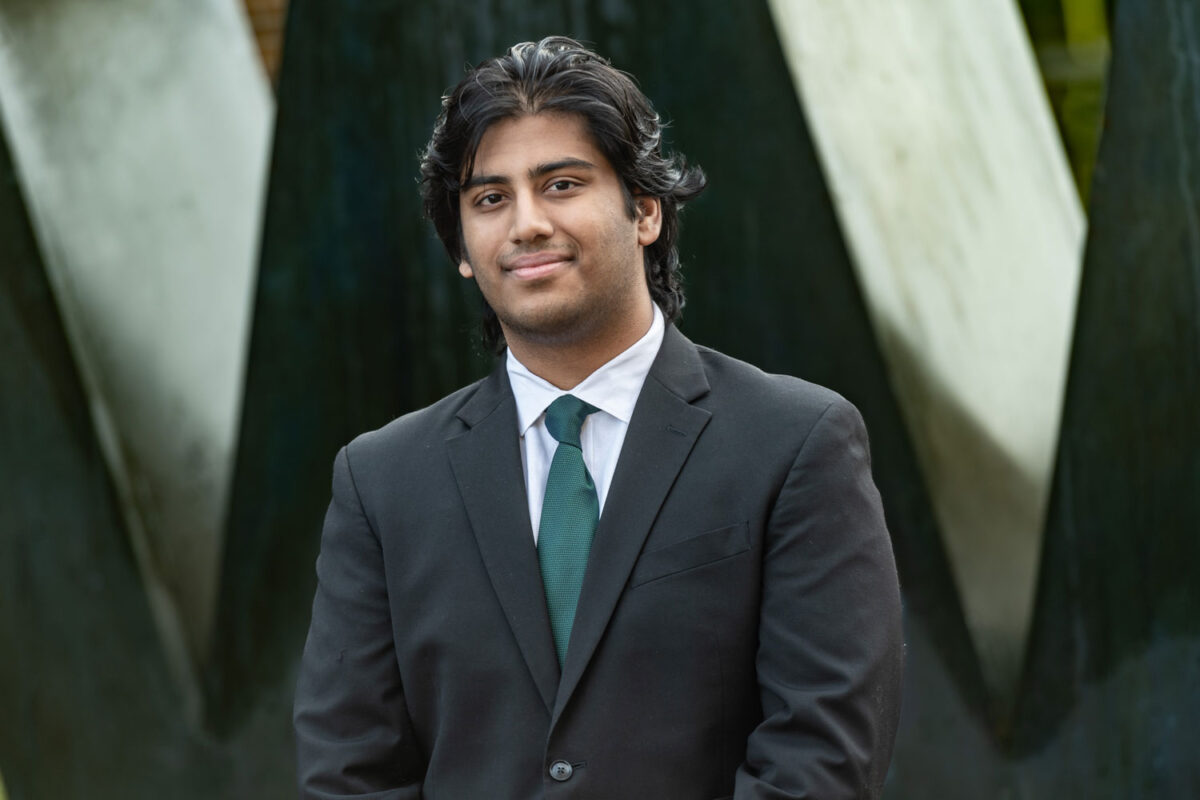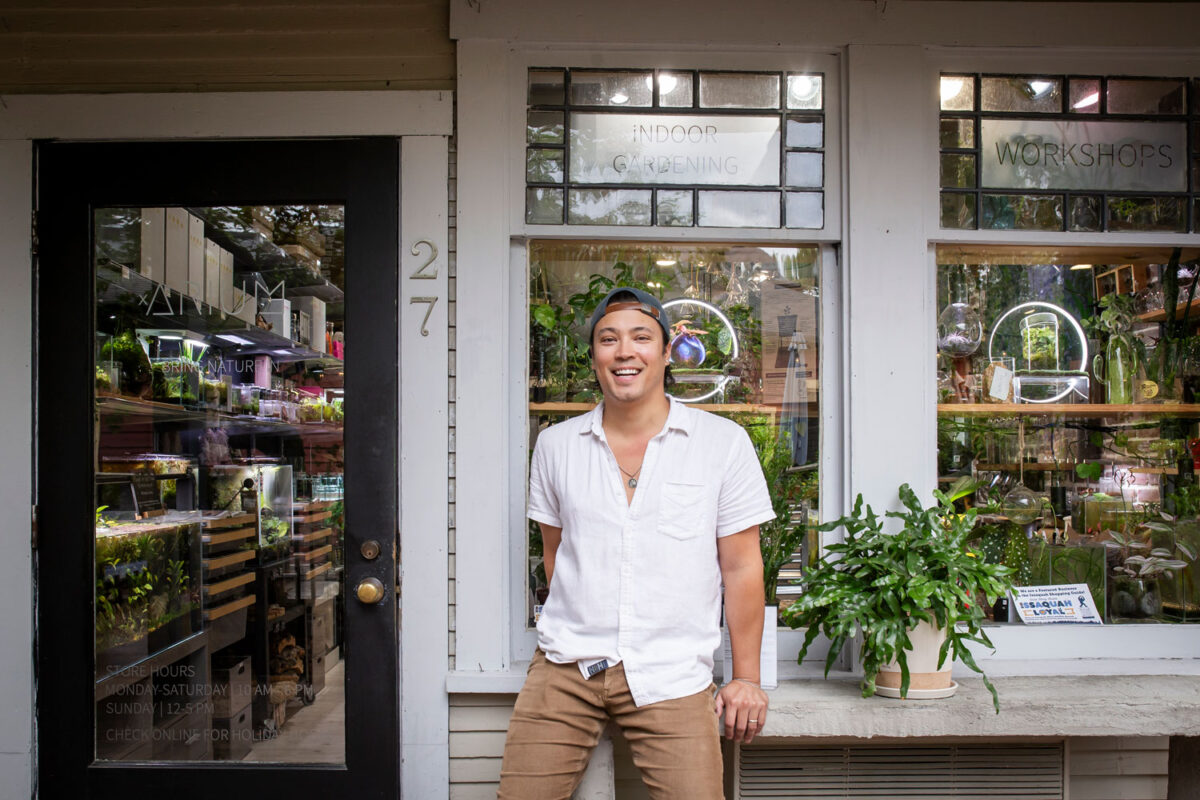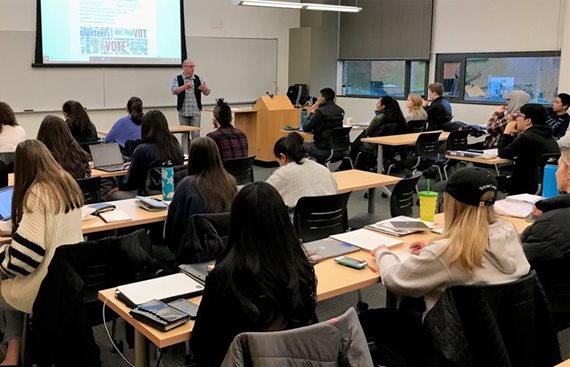
Young people, as a demographic, are inconsistent voters, if they vote at all. Why don’t they participate in elections as much as older voters? What could election officials do to increase participation?
Those were a couple of questions that Snohomish County election officials had for a University of Washington Bothell class in American Government & Politics. The winter quarter course, taught by Jason Lambacher, worked with the county Department of Elections on seven research and analysis projects. The county and the class connected through the UW Bothell Office of Community-Based Learning and Research.
The projects launched Jan. 22 when County Auditor Garth Fell, the elections manager, and Duncan Clauson, voter outreach specialist, briefed the class on the county, its voters and efforts to improve elections and turnout.
Polls gone postal
Since 2006, the term “voter turnout,” which once referred to voters physically going to polling places, has for Washingtonians meant dropping ballots in the mail or a drop box. This fundamental act of citizenship, Fell said, is lowest in the 18-30 age group.

“Most of you are in that range,” he told the UW Bothell class. “Getting feedback through your eyes is going to be very useful.”
In addition to voter participation and ballot access, the projects included analyzing census data by voting district and changing ballot design.
Students were supposed to present their findings March 9 to Fell and Clauson, but with classes no longer being held in person because of the coronavirus, they sent their slide decks instead and exchanged written comments on Canvas, an online learning platform.
Younger voters
“I never realized how detached a large portion of our society is from politics,” one student wrote.
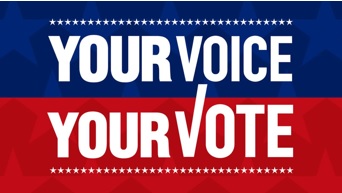
Several wished they had had better civics education in high school. “If I was taught in high school and encouraged to vote after turning 18, perhaps I would be more excited about politics,” a student wrote.
“I think it would be very beneficial for high schools to include a voting course and even perhaps encourage students to pre-register or register, depending on their age,” another student commented.
Other students recommended that election officials use more social media to appeal to a younger demographic and make voting more personal. People would be more likely to vote, one student team wrote, if they knew their friends voted.
“If I saw someone online who voted, I would be more likely to feel like I should vote,” one student commented.
Text messages also have a higher chance of being read than emails, students also suggested.
New voters, ballots
To expand participation on Indian reservations, students recommended placing more drop boxes in those places and allowing tribal members to use a nontraditional address, such as a Post Office box.
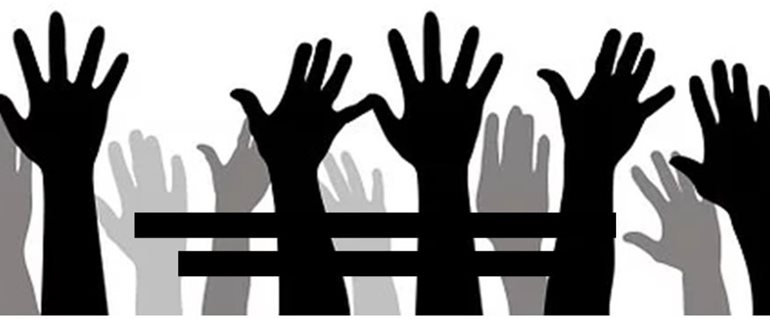
One group suggested new voter registration outreach to persons with disabilities, low-income persons and communities of color. Another suggestion to the elections department was to hire and promote from within the communities it wants to engage.
The ballot-design team suggested labeling each candidate or question with the corresponding page of the voter’s pamphlet. Some students suggested wording ballot measures in more everyday language.
“I know how frustrated I am when I am trying to interpret a referendum explanation,” one student commented.
University-community partnership
A lecturer in the School of Interdisciplinary Arts & Sciences, Lambacher was surprised at the “spotty” civics education students received in high school.
“And, from another angle, students are awash in media consumption yet unaware of many pressing current events,” he said. “It’s a paradox to me.”
Lambacher also worked with the elections department in the autumn 2019 quarter. With the 2020 presidential election drawing closer, the winter quarter students seemed more politically engaged, he said. It will be the first presidential election for all but one older student, who previously voted for the highest office in the land.
“I think there is a lot of potential to get students more involved in the political process,” Lambacher said.
In addition to sharpening political interests, the collaboration with Snohomish County gave students real-world insights and experience in research and analysis that they can add to their portfolios or resumes.
Preparing for Nov. 3
With 815,000 residents, Snohomish County is the third largest in Washington, after King and Pierce counties. Of the voting age population, only about 70% register — 475,000, Fell said.
For the presidential election, about 80% of voters will cast ballots, far more than in mid-term and off-year elections. An office staff of 10 will expand to as many as 150 for the big election, when they are needed to receive, count and certify ballots — using secure equipment not connected to the internet, Fell said.
The UW Bothell students provide election administrators a different point of view, Fell said.
“It gives us an opportunity to learn more about our own community and look at ourselves from a different perspective.”


